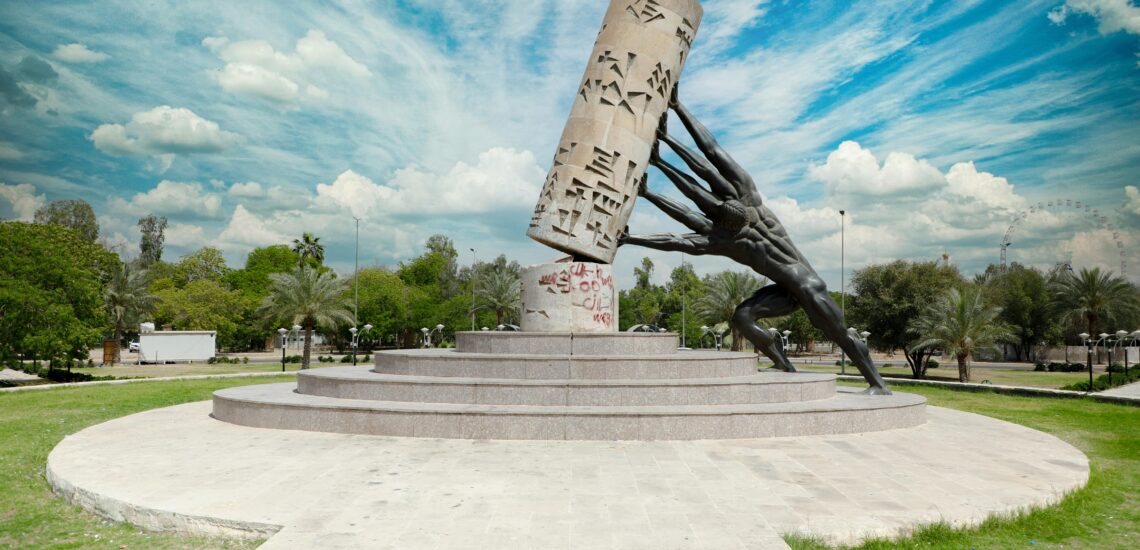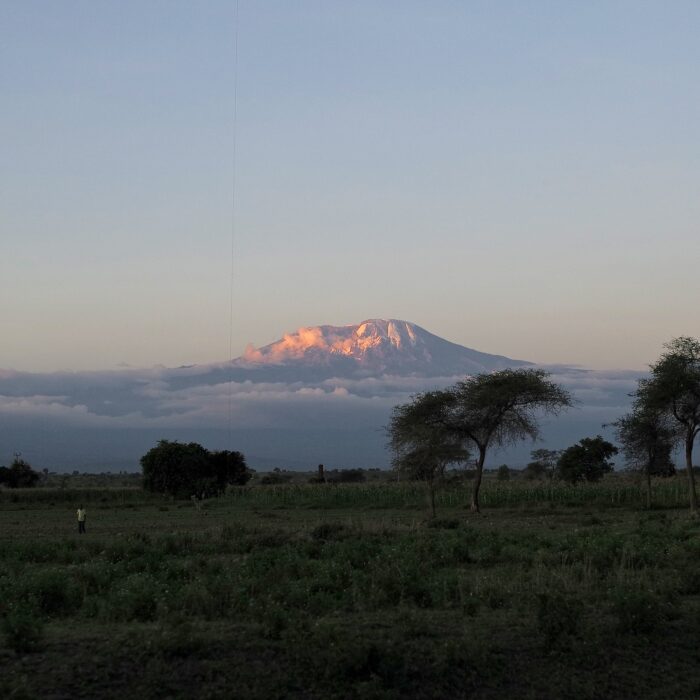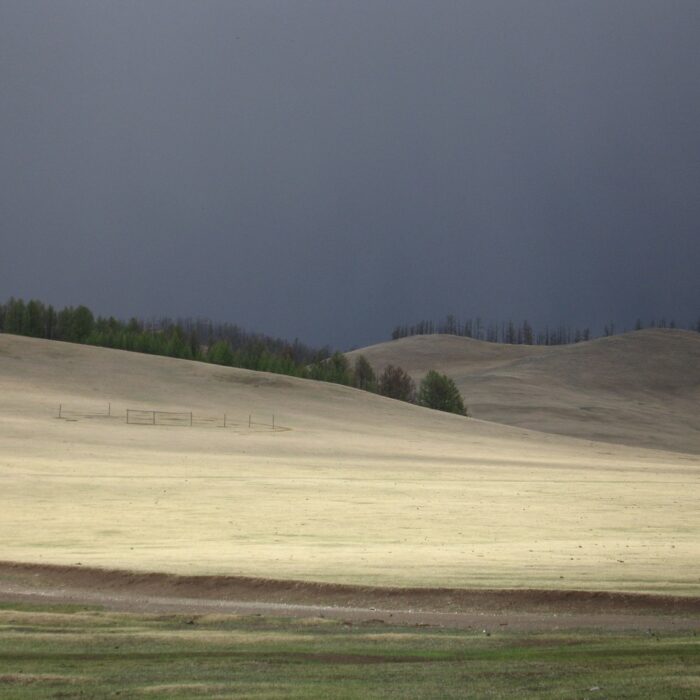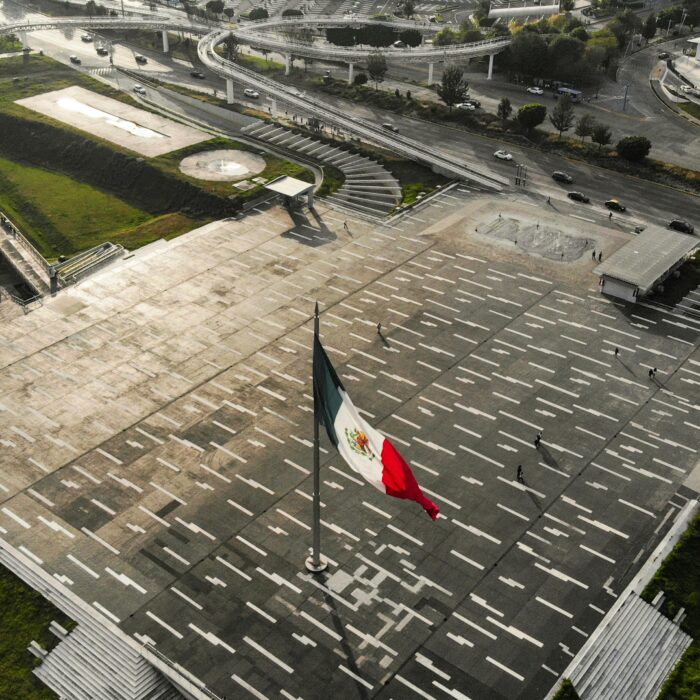Kurze Fakten über Irak:
- Einwohnerzahl: Ungefähr 41 Millionen Menschen.
- Hauptstadt: Bagdad.
- Offizielle Sprachen: Arabisch und Kurdisch.
- Andere Sprachen: Assyrisches Neo-Aramäisch, Turkmenisch und andere werden von Minderheiten gesprochen.
- Währung: Irakischer Dinar (IQD).
- Regierung: Föderale parlamentarische Republik.
- Wichtigste Religion: Islam, überwiegend Schiiten und Sunniten.
- Geografie: Das Land liegt im Nahen Osten und grenzt im Norden an die Türkei, im Osten an den Iran, im Südosten an Kuwait, im Süden an Saudi-Arabien, im Südwesten an Jordanien und im Westen an Syrien.
Fakt 1: Der Irak ist ein Gebiet der alten Zivilisationen
Der Irak ist eine Wiege antiker Zivilisationen und beherbergt einige der frühesten und einflussreichsten Kulturen der Menschheitsgeschichte. In dieser Region, die historisch als Mesopotamien bekannt ist, was “das Land zwischen den Flüssen” bedeutet (und sich auf Tigris und Euphrat bezieht), entstanden zahlreiche mächtige Zivilisationen, die den Grundstein für viele Aspekte der modernen Gesellschaft legten.
- Sumerer: Den Sumerern wird die Gründung einer der ersten städtischen Zivilisationen der Welt um 4500 v. Chr. zugeschrieben. Sie entwickelten die Keilschrift, eines der frühesten bekannten Schriftsysteme, das sie für Aufzeichnungen, Literatur und Verwaltungszwecke verwendeten. Die Sumerer machten auch bedeutende Fortschritte in der Mathematik, Astronomie und Architektur, wobei ihre Zikkurate als beeindruckende Beispiele für ihre technischen Fähigkeiten dienen.
- Akkadier: Nach den Sumerern entstand um 2334 v. Chr. das akkadische Reich unter der Führung von Sargon von Akkad. Es war eines der ersten Reiche der Geschichte und zeichnete sich durch eine zentralisierte Regierung und ein stehendes Heer aus. Die Akkader setzten die sumerische Tradition der Schrift fort und leisteten eigene Beiträge zur mesopotamischen Kultur.
- Babylonier: Die babylonische Zivilisation, insbesondere unter König Hammurabi (ca. 1792-1750 v. Chr.), ist bekannt für den Kodex des Hammurabi, eines der frühesten und vollständigsten geschriebenen Gesetzbücher. Babylon selbst wurde zu einem bedeutenden kulturellen und wirtschaftlichen Zentrum, dessen Hängende Gärten später zu den Sieben Weltwundern der Antike gezählt wurden.
- Assyrer: Das assyrische Reich, das für seine militärischen Fähigkeiten und seine effiziente Verwaltung bekannt ist, kontrollierte vom 25. bis zum 7. Jahrhundert v. Chr. ein riesiges Gebiet. Die Assyrer bauten ein ausgedehntes Straßensystem und entwickelten einen Postdienst, was zum Zusammenhalt und zur Stabilität ihres Reiches beitrug. Die Hauptstädte Ashur und Ninive waren bedeutende Zentren der Macht und Kultur.
- Andere Zivilisationen: Der Irak umfasst auch die Stätten anderer antiker Zivilisationen wie der Chaldäer, die Babylon im 7. und 6. Jahrhundert v. Chr. wiederbelebten, und der Parther und Sassaniden, die später über die Region herrschten und zu ihrem reichen Geschichtsbild beitrugen.
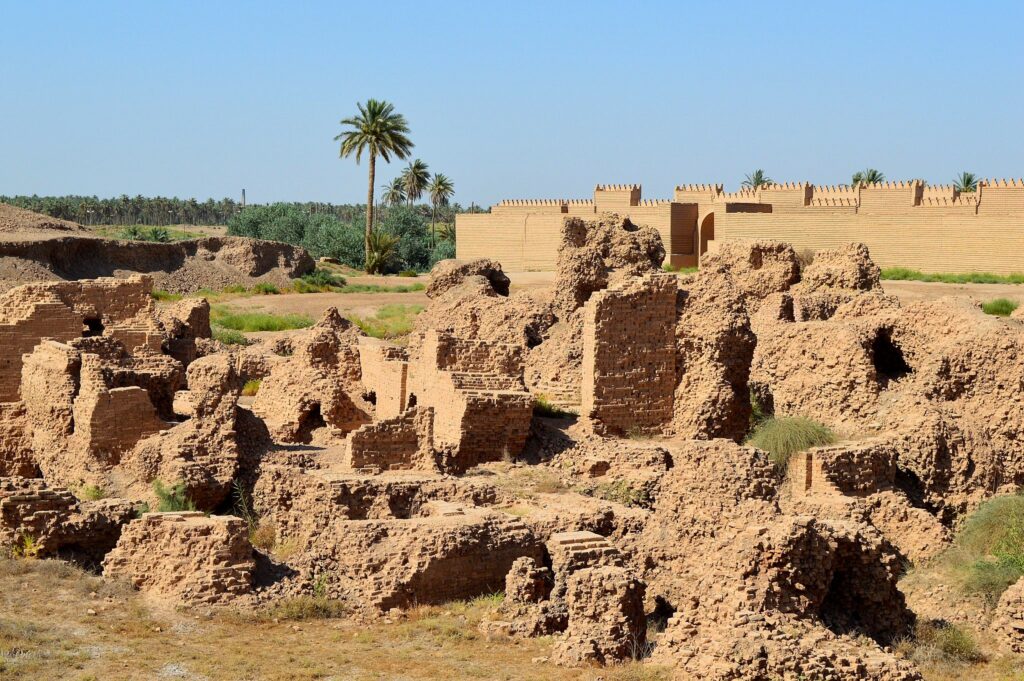
Fakt 2: Der Irak ist derzeit für Touristen nicht sicher
Der Irak gilt derzeit aufgrund der anhaltenden Sicherheitsbedenken, einschließlich der Präsenz von ISIS (Islamischer Staat im Irak und in Syrien), als unsicher für Touristen. Trotz der Bemühungen der irakischen Regierung und der internationalen Streitkräfte, den Einfluss von ISIS zu bekämpfen und einzuschränken, hat die Gruppe weiterhin Anschläge verübt und in bestimmten Gebieten die Kontrolle behalten. Diese Instabilität in Verbindung mit anderen Sicherheitsproblemen macht Reisen in den Irak für Ausländer riskant. Regierungen auf der ganzen Welt raten ihren Bürgern in der Regel, aufgrund dieser Gefahren nicht unbedingt notwendige Reisen in den Irak zu vermeiden.
Nichtsdestotrotz wird der Irak immer noch aus verschiedenen Gründen besucht, um die Regeln für einen Teil der Ausländer zu erfüllen, benötigen sie einen internationalen Führerschein im Irak, sowie eine Krankenversicherung. Erkundigen Sie sich beim Ministerium für auswärtige Angelegenheiten nach den Richtlinien und Regeln für den Besuch des Landes.
Fakt 3: Die Schrift hat ihren Ursprung im Irak
Die älteste bekannte Form der Schrift, die Keilschrift, wurde von den Sumerern im alten Mesopotamien um 3200 v. Chr. entwickelt. Dieses Schriftsystem wurde entwickelt, um Aufzeichnungen zu führen und die Komplexität einer zunehmend städtischen und bürokratischen Gesellschaft zu bewältigen.
Die Keilschrift begann mit einer Reihe von Piktogrammen, die Gegenstände und Ideen darstellten und mit einem Schilfrohrgriffel auf Tontafeln geschrieben wurden. Im Laufe der Zeit entwickelten sich diese Piktogramme zu abstrakteren Symbolen, die Laute und Silben darstellten und die Aufzeichnung eines breiteren Spektrums von Informationen ermöglichten, darunter Rechtskodizes, Literatur und Verwaltungsdokumente.
Eines der berühmtesten Werke aus dieser Zeit ist das “Gilgamesch-Epos”, ein poetisches Werk, das sich mit Themen wie Heldentum, Freundschaft und dem Streben nach Unsterblichkeit beschäftigt.
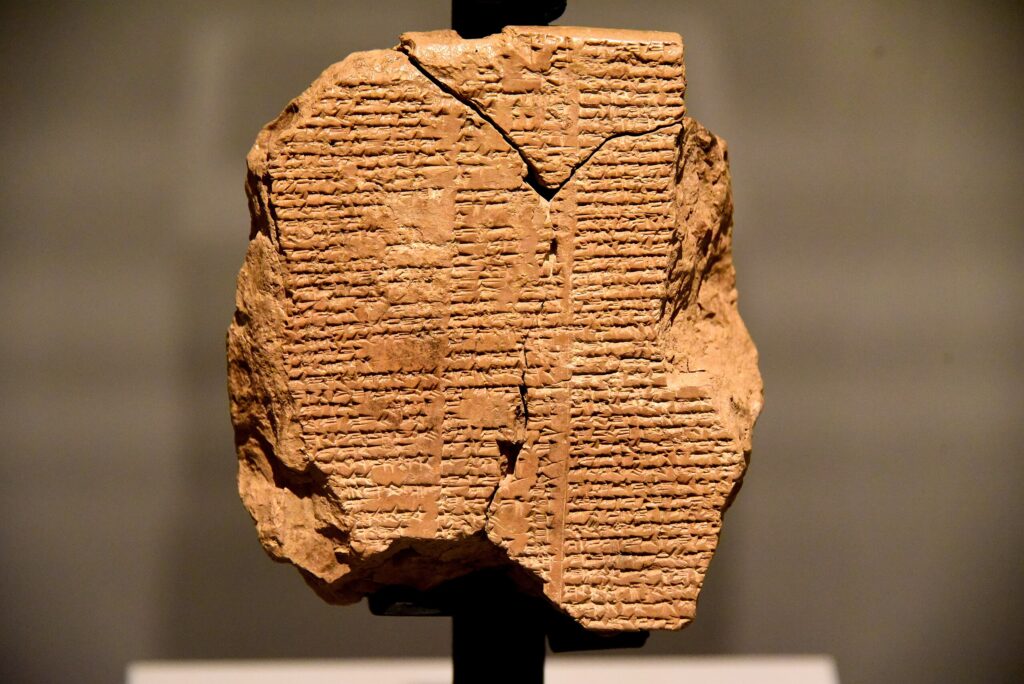
Fakt 4: Der Irak ist sehr reich an Öl
Das Land verfügt über die fünftgrößten nachgewiesenen Ölreserven der Welt, die auf rund 145 Milliarden Barrel geschätzt werden. Diese reichlich vorhandene natürliche Ressource ist ein Eckpfeiler der irakischen Wirtschaft und trägt erheblich zum BIP und zu den Staatseinnahmen des Landes bei.
Die wichtigsten Ölfelder des Landes befinden sich vor allem im Süden bei Basra und im Norden bei Kirkuk. Vor allem in der Region Basra befinden sich einige der größten und produktivsten Ölfelder, darunter die Felder Rumaila, West Qurna und Majnoon. Diese Felder haben beträchtliche Investitionen von internationalen Ölgesellschaften angezogen, die zur Steigerung der Produktionskapazitäten beigetragen haben.
Die Ölförderung im Irak blickt auf eine lange Geschichte zurück. 1927 wurde die erste kommerzielle Ölquelle gebohrt. Seitdem hat die Branche aufgrund von politischer Instabilität, Kriegen und internationalen Sanktionen Phasen der Expansion und des Rückgangs erlebt.
Fakt 5: Im Irak sind Ruinen antiker Städte erhalten geblieben
Im Irak gibt es zahlreiche gut erhaltene Ruinen antiker Städte, die die reiche Geschichte des Landes als Wiege der Zivilisation widerspiegeln. Diese archäologischen Stätten bieten unschätzbare Einblicke in die frühe Entwicklung des städtischen Lebens, der Kultur und der Regierungsführung.
- Babylon: Die vielleicht berühmteste dieser antiken Städte ist Babylon, das in der Nähe des heutigen Bagdad liegt. Einst war sie die Hauptstadt des Babylonischen Reiches und erreichte ihren Höhepunkt unter König Nebukadnezar II. im 6. Babylon ist bekannt für seine beeindruckenden Bauwerke wie das Ischtar-Tor mit seinen auffälligen blau glasierten Ziegeln und Darstellungen von Drachen und Stieren. Legendär sind auch die Hängenden Gärten, eines der Sieben Weltwunder der Antike, deren Existenz unter Historikern allerdings umstritten ist.
- Ur: Ur, eine weitere bedeutende Stätte, liegt im Südirak in der Nähe von Nasiriyah. Diese sumerische Stadt aus der Zeit um 3800 v. Chr. ist berühmt für ihre gut erhaltene Zikkurat, ein massives, terrassenförmiges Bauwerk, das dem Mondgott Nanna geweiht ist. Ur war ein wichtiges Zentrum für Handel, Kultur und Religion und gilt als Geburtsort des biblischen Patriarchen Abraham.
- Ninive: Die antike Stadt Ninive in der Nähe des heutigen Mosul war einst die Hauptstadt des mächtigen assyrischen Reiches. Ninive stammt aus der Zeit um 700 v. Chr. und war bekannt für seine beeindruckenden Mauern, Paläste und die umfangreiche Bibliothek von Ashurbanipal, die Tausende von Tontafeln in Keilschrift enthielt. Zu den Ruinen der Stadt gehören die Überreste des großen Palastes von Sennacherib und der Ishtar-Tempel.
- Nimrud: Nimrud, ebenfalls eine bedeutende assyrische Stadt, befindet sich südlich von Mosul. Sie wurde im 13. Jahrhundert v. Chr. gegründet und erlebte ihre Blütezeit unter König Aschurnasirpal II., der einen prächtigen Palast errichtete, der mit kunstvollen Reliefs und kolossalen Statuen geflügelter Stiere, den so genannten Lamassu, geschmückt war. Die archäologische Bedeutung der Stadt ist immens, auch wenn sie in den letzten Jahren durch Konflikte beschädigt wurde.
- Hatra: Hatra, in der Region Al-Jazira gelegen, ist eine parthische Stadt, die zwischen dem 1. und 2. Bekannt für ihre gut erhaltenen Tempel und Verteidigungsmauern war Hatra ein wichtiges religiöses und Handelszentrum. Ihre beeindruckende Architektur und die Verschmelzung von griechischen, römischen und östlichen Einflüssen machen sie zum UNESCO-Weltkulturerbe.
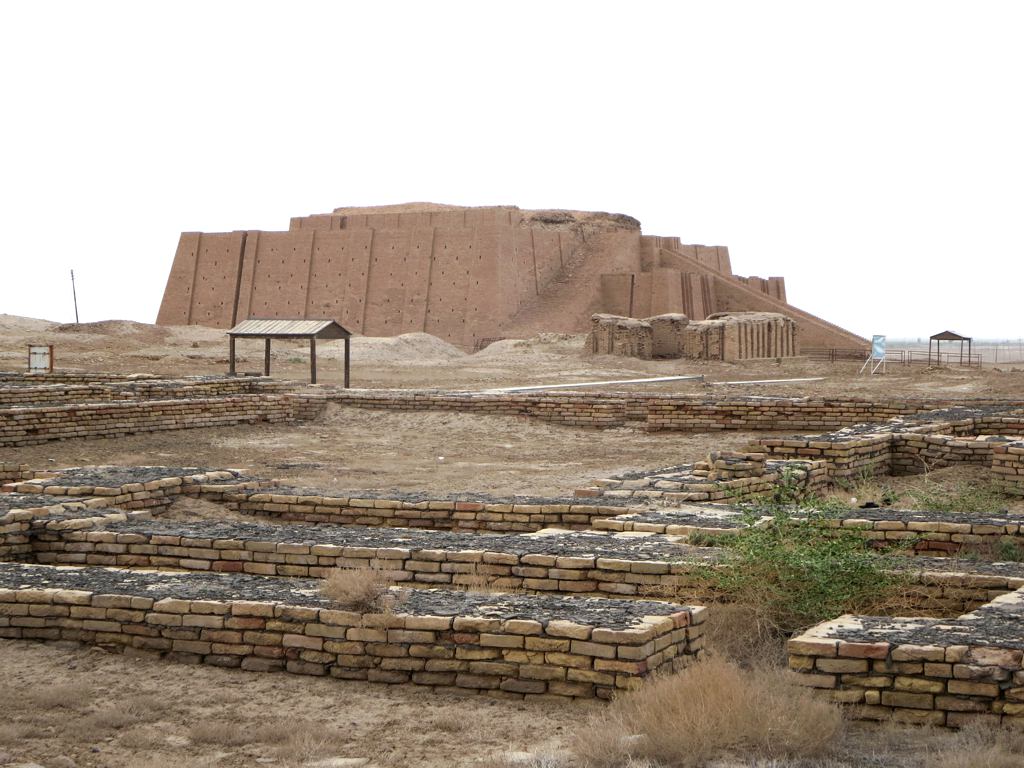
Fakt 6: Der Irak ist ein Land mit vielfältigen Landschaften
Entgegen der landläufigen Meinung ist der Irak ein Land mit vielfältigen Landschaften. Neben den bekannten Wüstenregionen gibt es im Irak auch fruchtbare Ebenen, Gebirgsregionen und üppige Sumpfgebiete.
Im Norden bildet das zerklüftete Zagros-Gebirge mit seinen dichten Wäldern und malerischen Tälern einen starken Kontrast zu den flachen Ebenen. In dieser Region ist es kühler und es fällt mehr Niederschlag, was eine andere Flora und Fauna begünstigt. Der Südirak beherbergt außerdem die mesopotamischen Sümpfe, eines der einzigartigsten Feuchtgebiete der Welt, das sich durch ausgedehnte Schilfgebiete und Wasserwege auszeichnet, die eine vielfältige Tierwelt und die traditionelle arabische Sumpfkultur beherbergen.
Obwohl große Teile des Irak, insbesondere im Westen und Süden, von Wüsten bedeckt sind, haben auch diese trockenen Landschaften ihre eigene Vielfalt mit Felsen, Plateaus und Sanddünen. Die Flusstäler von Tigris und Euphrat sind lebenswichtige Lebensadern, die wichtige Wasserressourcen für die Landwirtschaft, die Trinkwasserversorgung und die Industrie liefern und sowohl historische als auch aktuelle Siedlungsmuster prägen. Diese geografische Vielfalt macht den Irak zu einem Land mit einer reichhaltigen und abwechslungsreichen Umwelt, die weit über sein Wüstenimage hinausgeht.
Fakt 7: Die irakische Küche ist sehr vielfältig und köstlich
Die irakische Küche ist vielfältig und köstlich und spiegelt die reiche Geschichte des Landes und seine vielfältigen kulturellen Einflüsse wider. Sie kombiniert Aromen und Techniken aus der alten mesopotamischen Zivilisation sowie persische, türkische und levantinische Traditionen, was zu einer einzigartigen und schmackhaften kulinarischen Tradition führt.
Eines der Grundnahrungsmittel der irakischen Küche ist Reis, der oft mit Eintöpfen (bekannt als “tashreeb”) und Fleisch serviert wird. Biryani, ein gewürztes Reisgericht mit Fleisch und Gemüse, ist besonders beliebt. Spieße und gegrillte Fleischsorten wie Lamm und Huhn, die oft in einer Gewürzmischung mariniert werden, sind bei den Mahlzeiten häufig anzutreffen und zeigen die Vorliebe der Region für deftige, schmackhafte Gerichte.
Ein weiteres beliebtes Gericht ist Masgouf, eine traditionelle Methode zum Grillen von Fisch, insbesondere Karpfen, der mit Olivenöl, Salz und Kurkuma mariniert wird, bevor er über einer offenen Flamme gegrillt wird. Dieses Gericht wird oft an den Ufern des Tigris gegessen, wo es reichlich frischen Fisch gibt.
Gemüse und Hülsenfrüchte spielen in der irakischen Küche eine wichtige Rolle, wobei Gerichte wie Dolma (gefüllte Weinblätter und Gemüse) und Fasolia (ein Bohneneintopf) zu den täglichen Grundnahrungsmitteln gehören. Brot, vor allem Fladenbrot wie Khubz und Samoon, ist eine unverzichtbare Beilage zu den meisten Mahlzeiten.
Für Naschkatzen sind die irakischen Desserts ein Genuss. Baklava, Halva und Knafeh sind sehr beliebt und schmecken nach Honig, Nüssen und duftenden Gewürzen. Süßigkeiten auf Dattelbasis sind ebenfalls weit verbreitet, was den Status des Irak als einer der größten Dattelproduzenten der Welt widerspiegelt.
Neben diesen traditionellen Gerichten zeichnet sich die irakische Küche auch durch die Verwendung einer breiten Palette von Gewürzen wie Kreuzkümmel, Koriander, Kardamom und Safran aus, die den Speisen Tiefe und Komplexität verleihen.
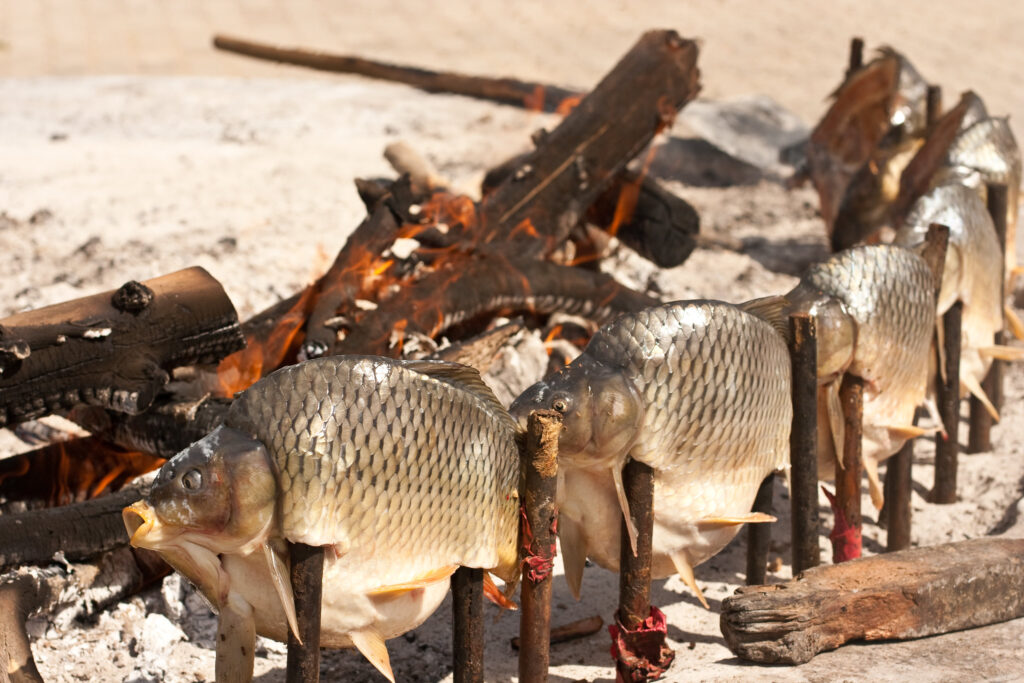
Fakt 8: Muslime glauben, dass die Arche Noah im Irak gebaut wurde
Muslime glauben, dass die Arche Noah auf dem Gebiet des heutigen Irak gebaut wurde. Nach islamischer Überlieferung wurde der Prophet Noah (Nuh auf Arabisch) von Gott angewiesen, die Arche im Land Mesopotamien zu bauen, das Teilen des heutigen Irak entspricht.
Die Geschichte Noahs wird in mehreren Kapiteln (Suren) des Korans, insbesondere in Surah Hud und Surah Nuh, ausführlich erzählt. Darin wird beschrieben, wie Noah von Gott den Auftrag erhielt, sein Volk vor der drohenden göttlichen Strafe für seine Schlechtigkeit und seinen Götzendienst zu warnen. Trotz Noahs Bemühungen hörte nur eine kleine Gruppe von Gläubigen auf seine Warnung. Gott wies Noah daraufhin an, ein großes Schiff zu bauen, um seine Anhänger und einige Tierpaare vor der bevorstehenden Sintflut zu retten.
Der Ort, an dem die Arche gebaut wurde, wird oft mit dem alten Mesopotamien in Verbindung gebracht, einer Wiege der frühen Zivilisationen. Dieses Gebiet, das reich an historischer und religiöser Bedeutung ist, wird von vielen als Schauplatz zahlreicher biblischer und koranischer Ereignisse angesehen. Der genaue Ort, an dem die Arche gebaut wurde, wird im Koran nicht näher beschrieben, aber islamische Gelehrte und Historiker ordnen sie aufgrund des historischen und geografischen Kontextes traditionell dieser Region zu.
Fakt 9: Nadia Murad ist die einzige Nobelpreisträgerin aus dem Irak
Nadia Murad, eine jesidische Menschenrechtsaktivistin, ist tatsächlich die einzige Nobelpreisträgerin aus dem Irak. Sie erhielt den Friedensnobelpreis 2018 für ihren Einsatz gegen sexuelle Gewalt als Waffe in Kriegen und bewaffneten Konflikten. Nadia Murad setzt sich vor allem für die Notlage der jesidischen Frauen und Mädchen ein, die 2014 von ISIS-Kämpfern (Islamischer Staat im Irak und Syrien) im Nordirak entführt und versklavt wurden.
Nadia Murad wurde in dem Dorf Kocho in der Nähe von Sinjar (Irak) geboren und wurde selbst von ISIS entführt und musste monatelange Gefangenschaft und Misshandlungen ertragen, bevor sie entkommen konnte. Seitdem ist sie zu einer prominenten Stimme für die Opfer von Menschenhandel und sexueller Gewalt in Konfliktgebieten geworden.
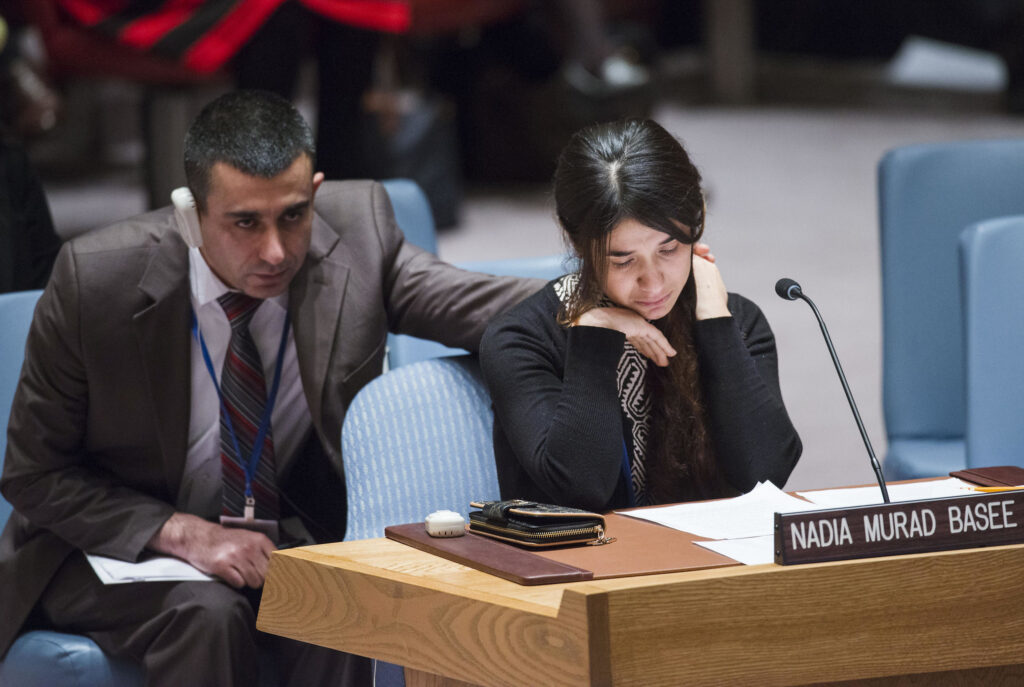
Fakt 10: Die Stadt Samarra im Irak besitzt zwei der größten Moscheen der Welt
Die irakische Stadt Samarra ist für ihre architektonische und historische Bedeutung bekannt. Sie beherbergt vor allem zwei der größten Moscheen der islamischen Welt: die Große Moschee von Samarra (Masjid al-Mutawakkil) und das Malwiya-Minarett.
Große Moschee von Samarra (Masjid al-Mutawakkil)
Die im 9. Jahrhundert während des Abbasiden-Kalifats unter der Herrschaft des Kalifen al-Mutawakkil errichtete Große Moschee von Samarra ist ein beeindruckendes Beispiel frühislamischer Architektur. Ihr markantestes Merkmal ist das spiralförmige Minarett, das ursprünglich eine erstaunliche Höhe von rund 52 Metern hatte und damit eines der höchsten jemals errichteten Minarette war. Obwohl die Moschee im Laufe der Jahrhunderte beschädigt wurde, ist sie nach wie vor ein bedeutendes historisches und architektonisches Wahrzeichen, das die Erhabenheit und Innovation der islamischen Architektur der Abbasidenzeit widerspiegelt.
Malwiya-Minarett
Neben der Großen Moschee befindet sich das Malwiya-Minarett, auch bekannt als Al-Malwiya-Turm. Dieses einzigartige Minarett zeichnet sich durch seine spiralförmige, zylindrische Struktur aus, die an ein Schneckenhaus erinnert, und ist etwa 52 Meter hoch. Das Minarett diente sowohl einem funktionalen als auch einem symbolischen Zweck: Es wurde für den Gebetsruf (adhan) verwendet und war auch ein visuelles Symbol für die Macht und den Einfluss des abbasidischen Kalifats.
Beide Bauwerke, die Große Moschee und das Malwiya-Minarett, sind Teil der archäologischen Stätte von Samarra, die seit 2007 zum UNESCO-Weltkulturerbe gehört. Sie zeugen von den architektonischen und kulturellen Errungenschaften der abbasidischen Periode im Irak und verdeutlichen die historische Bedeutung der Stadt als Zentrum der islamischen Zivilisation im Mittelalter.

Veröffentlicht Juli 07, 2024 • 12 m zum Lesen

